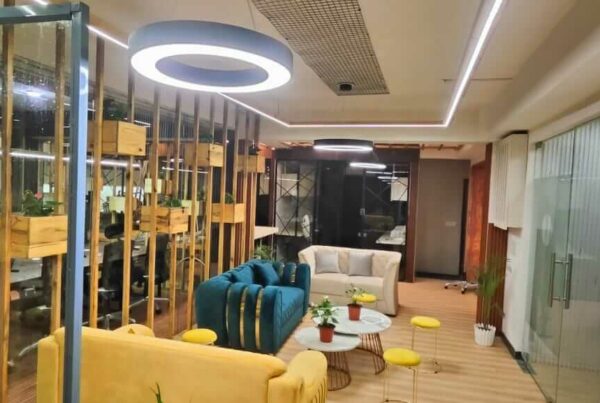Over the past two to three years, co-working spaces in India have gone through an explosive transformation. Fast forward to today and a major redefinition that took place was the emphasis on design in the shared workspace model.
These spaces have begun to look at how architecture and interiors could directly make an impact on the productivity of working individuals. The future world of work is going to be impacted by a lifestyle of customized preferences, productivity, personal development, and social responsibility. Hence, it becomes critical to evolve our design approach when designing co-working spaces of the future. To name a few top ones, here’s a list which goes:
More Flexibility
Going forward, the world of co-working spaces will need to be even more fluid in accommodating the changing needs of scaling businesses. Companies expand, contract or sometimes change the way they work and all of this impacts their workspace requirements. Research labs are already looking at smart technologies where moving walls and furniture can help reconfigure a room in a matter of minutes. This way, it would become both cost-effective and efficient to produce flexible workspaces on a largescale basis.
The reality of these technologies might still take some time to become reality, in the meantime planning for flexibility in the design stages help meet the changing requirements of companies without much pain. Remember, the higher the flexibility offered by coworking spaces, better relief will it bring to its members.
Sustainability
The design and construction of built environments have a huge impact on our resource-dependent world. From decisions such as choosing water-saving bathroom fixtures to use renewable materials like bamboo can help reduce the carbon footprint inside the space.
Embracing the idea of sustainability as primary will be important for a successful and futuristic workplace.
Knowing that space you inhabit respects the environment is also a great feel-good factor for all coworkers. Gradually, giants in the pipeline are making their move towards a more nature-friendly workplace environment.
Research-Based Design
Many coworking companies are studying how companies use their spaces to analyze optimal utilization. The data will help designers gain incredible insights which can lead to the creation of better workplace environments.
Gradually, many co-working spaces are trying to use design as a tool to enable member work effectively. Having space where one can pin-up, scribble or ideate gives members the flexibility on how to work & too, carries a huge impact on their productivity.
Phone booths, library spaces, sleeping pods, quiet corners, etc provide great nooks to zone in and get some work done more efficiently. This gives team members the freedom on how to structure their day in and day out around the workspace. This eventually helps boost employee morale & effectiveness.
Healthy Environment
Design of co-working spaces will facilitate mental and physical wellness via the creation of a healthier environment to enable creativity and focus. Great lighting and a matured use of aesthetics can bring vibrancy and help increase positivity in the workplace (don’t just use primary colours, experiment!).
The use of art will help give co-working spaces a unique edge. Also, an indoor environment in modern glass buildings can be quite isolating as the connection with the external environment reduces. Co-working spaces are looking at ways of bringing more of the outdoors to indoors. In this, the use of plants here helps a lot. Lastly, members soon would prefer a space which is more environment-friendly and offers less carbon space, providing room for creativity to bounce in.
Design As an ‘Enabler’
As the number of co-working spaces is increasing at a rapid rate, so is the need to differentiate them. Here, the design of workspace plays a major role. Coworking spaces will look at cross-pollinating various business models, e.g. having a gyming place or perhaps a yoga centre within a co-working space or providing sleeping pods for quick naps. The design will enable the efficient use of space, and help manage the mixing of two or more models into a singular one.
Conclusion
Keeping the focus on the overall member experience will help enhance productivity, health, and well-being of coworkers. Further, all this, in turn, will ensure continuity in the dividends co-working spaces to help create future companies.






